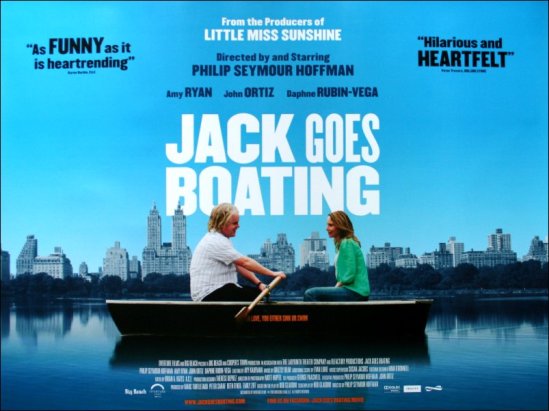
Impressive writing, impeccable direction (every scene is built up), and interesting acting. Philip Seymour Hoffman is a genius in my book, so there is much to mine here.
The premise is symmetrical. One couple try to match two of their friends together. They have been together long enough to be described as ‘settled’. They are Black or Hispanic, their friends are white. This matters, I think.
The first couple is disintegrating. The second are in the throes of first love. Everything is about contrasts, it seems.
Before you call me wimpy, or retarded, let me explain the templates this goes up against. We usually have romantic comedies where the characters are clearly drawn out to be comedic. We have the same here, but toned down a few notches. Instead of gratuitous silliness, we have an offbeat naturalism.
The black couple revels in clichés: the husband is short-tempered and smokes weed to relax; his wife is promiscuous and overall aloof. This helps us center Hoffman’s eccentricities a little more so as to place him in the ‘normal’ zone.
What happens next: the girl suggests they go boating in Central Park, but Jack does not know how to swim, let alone boat. He volunteers to cook a meal, but doesn’t know how to cook either. His black friend will facilitate his apprenticeship in swimming and cooking. But in the end he will separate from his wife, while Jack and Amy will remain in love.
Predictability in story is never a factor in good storytelling. The excitement is in the skill of story development, and outlining character perspectives. It’s a psychological game of musical chairs and human urges.
We are privy to each character’s internal life. Scenes are either interactions between the characters, or moments during their alone time, revealing crucial information, either by projecting a future scene, or allowing repose from the main thread and entrance into their headspace.
This headspace is highly geometrical. When a character is alone, we assume he is reflecting on what he knows from the story, which seems to be measured according to mathematical rules. (I need to expound on this observation)
The final scene involves drug use. Each character smokes hashish from a hookah. All headpsaces are therefore blended, and suspended. We sense that perspectives will gather, potentially cause damage or retrieve necessary information, and retreat back to their separate inner subjectivity.
One couple breaks up, the new couple stays together. Could be a tad formulaic, but the structure here reveals something that reaches into our own lives. What if every story is a reflection of another one, with varying degrees of resemblance? Could it be that our lives are simply shadows of other lives and our thoughts and actions geometrical projections? Maybe the pattern is not discernible as we live it, but movies being reasoning models in themselves can illustrate it.
Categories: Notes